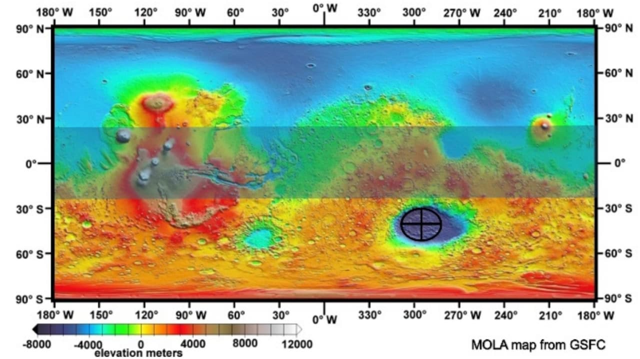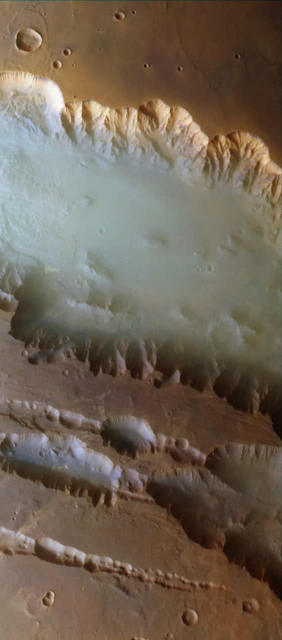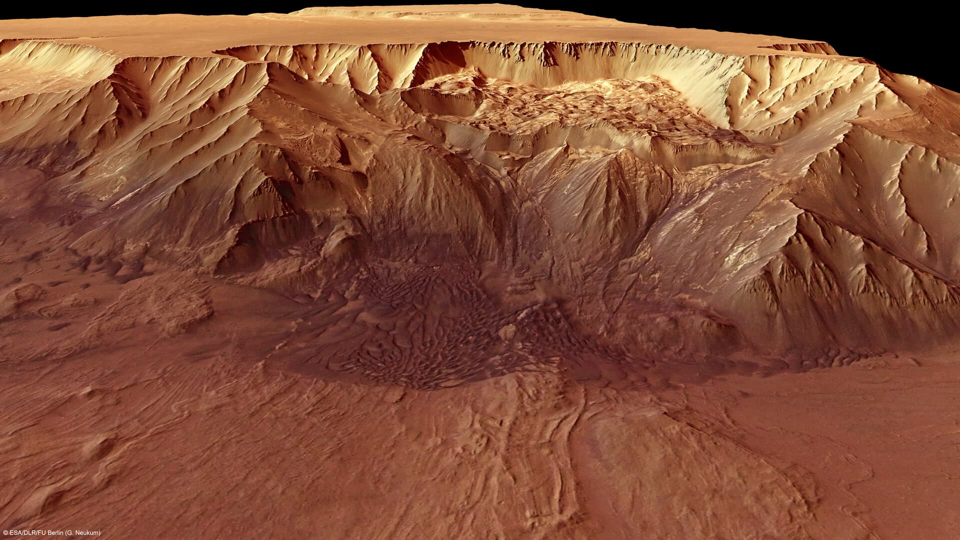Scientists have determined the specific locations on Mars where trees could potentially bloom for the first time.
Currently, SpaceX is testing a reusable launch vehicle aimed at enabling the colonization and terraforming of Mars. Among SpaceX employees are scientists who have previously described the simplest and most efficient technical methods for terraforming the fourth planet (using super greenhouse gases). However, this process is inherently slow and requires centuries. While it is possible to raise the temperature of the Red Planet to current Earth levels almost immediately after achieving the necessary concentrations of super greenhouse gases in the Martian atmosphere, saturating it with oxygen will, at best, take many centuries. Trees are the most efficient at photosynthesis in conditions of low moisture, as they have a lower water requirement per unit of biomass.
The issue is that the current gas envelope of Mars is about 170 times thinner than Earth's at sea level. On Earth, such pressure exists at an altitude of 35 kilometers, and trees require a higher pressure for their vital functions. Therefore, scientists from the USA, Poland, and Switzerland attempted to calculate the specific conditions under which trees could flourish on the fourth planet. They presented their findings at the Astrobiology and the Future of Life conference held at the Lunar and Planetary Institute in Houston, USA, in October 2024.
Currently, the pressure on the surface of Mars is 0.61 kilopascals. The authors of the report note that Earth trees, according to laboratory experiments, can grow at pressures starting from 10 kilopascals, which is 16 times higher than the current Martian pressure but 10 times lower than present-day Earth pressure. In addition, they require a certain temperature. About one percent of this pressure (0.1 kilopascal) must consist of oxygen, as higher plants on Earth cannot survive without it at night.
The length of the growing season must be no less than 110 sols (local days, 24 hours and 40 minutes) out of the 669 sols that make up a Martian year. During the growing season, minimum nighttime temperatures should not drop below -6°C, average temperatures should not fall below +6°C, and maximum temperatures should not exceed +40°C.
Such conditions can be achieved when the Martian atmosphere absorbs solar radiation at a rate of 0.27 of the maximum. This is quite feasible with the active introduction of a large amount of super greenhouse gases. Simulation shows that the required temperature and atmospheric conditions will first be reached in a rather unexpected location — the Elysium Planitia.

This is a basin with a diameter of up to 2300 kilometers and a depth of seven kilometers below the average surface height of Mars. It is located outside the tropics, meaning it is in the warmest part of the planet. At its bottom, the atmospheric pressure is currently 1.24 kilopascals, which is twice the standard Martian pressure. In summer, light fog sometimes forms there, and in winter, water frost consistently falls, making it easily distinguishable on the planet's surface. Moreover, the pressure there is above the so-called triple point of water, allowing liquid water to exist on the surface, whereas on the rest of the planet, it would quickly evaporate due to excessively low pressure. At the bottom of the plain, the necessary pressure parameters for trees will be achieved twice as quickly as on the rest of the Martian surface.
The authors' conclusions indicate, on one hand, that the equator is not the best location for the first experimental non-pressurized and unheated (and therefore inexpensive) greenhouses on the surface of Mars. On the other hand, it can be added that radar studies of the fourth planet have shown that there are deposits of water ice on Elysium Planitia, ranging from 200 to 450 meters thick. This means that with the start of terraforming, liquid water will form there in significant quantities, potentially initiating a local hydrological cycle with precipitation.

It should be noted that in their calculations, the scientists used strong generalizations. For simplicity, they divided the Martian surface into segments of 190 by 190 kilometers. This allows for assessing the situation for large plains but distorts the evaluation of the suitability for trees in rugged terrain.
For instance, the Mariner Valleys reach depths of 11 kilometers (the bottom of the Melas Canyon). It is believed that there was a super-deep lake here in ancient times. The canyon is 547 kilometers long, but much narrower, so it did not fit into the 190 by 190 kilometer assessment. Considering that Melas is located at 10 degrees south latitude, and its bottom, at its lowest point, is four kilometers lower than Elysium Planitia, the temperature and atmospheric conditions suitable for tree growth should develop significantly earlier than the optical absorption by the atmosphere reaches 0.27 of the total absorption.

The increase in atmospheric pressure on the fourth planet should occur naturally with the rise in temperature. The reason is that a significant portion of the local carbon dioxide is bound in dry ice at the poles, while a large amount of nitrogen is in perchlorates, which the local soils are rich in. These perchlorates are stable only at very low temperatures, and as temperatures rise, they break down, releasing nitrogen.
It should be noted that raising the oxygen pressure on Mars to 0.1 kilopascals is a separate and quite complex task, which could be aided by other Earth photosynthetic organisms, as previously reported by Naked Science. Unlike trees, they (according to laboratory experiments) can currently survive in Martian conditions, albeit in a rather limited number of locations.